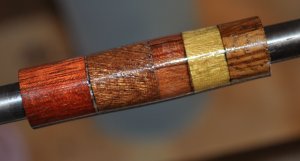MurphysPenWorks
Member
Hi all. I've been turning pens for a little while now and my skill level has increased each time. When first starting I was sanding them to 600 grit and finishing my pens with a simple coat of HUT Crystal Coat friction polish, which looked horrible. I asked one of the guys, thankfully a pen turner himself, at my local woodcraft for help and he turned me onto micro mesh, and using a 50/50 mix of crystal coat and BEHLEN topped with Renaissance wax. This was night and day compared to what my pens looked like before but I need to take another step to making wood look like glass like you all do on a daily basis. I have purchased a few pieces of some very choice looking wood from Arizona Silhouette and I want to make these look amazing compared to what I do now. I guess what I am looking for asking this question is just to see what you all do from initial sanding through final finish because I know there is no one answer. Thanks so much for your help, hopefully this all makes sense.:question:

